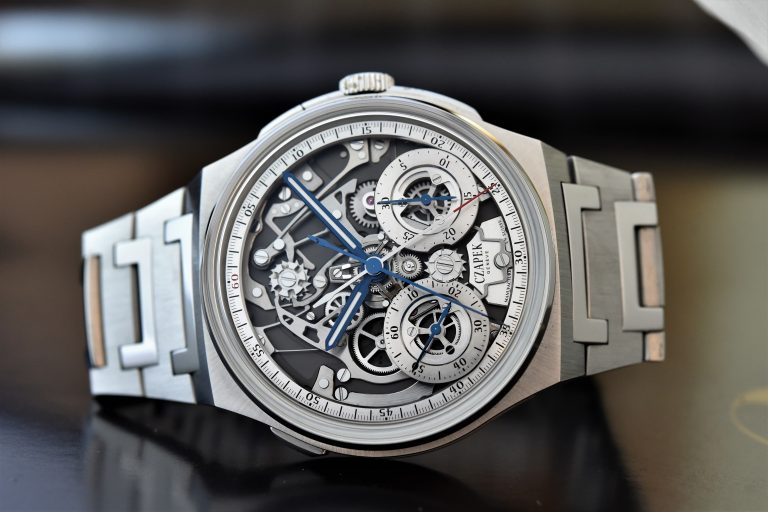In the world of watchmaking, there are few complications considered harder to design, construct and regulate than the rattrapante, or the split-seconds chronograph. Not only do the components need to be precisely manufactured, but the watchmaker must also be skilled enough to recognise how much adjustment each component needs in order to interact correctly with the entire chronograph mechanism.
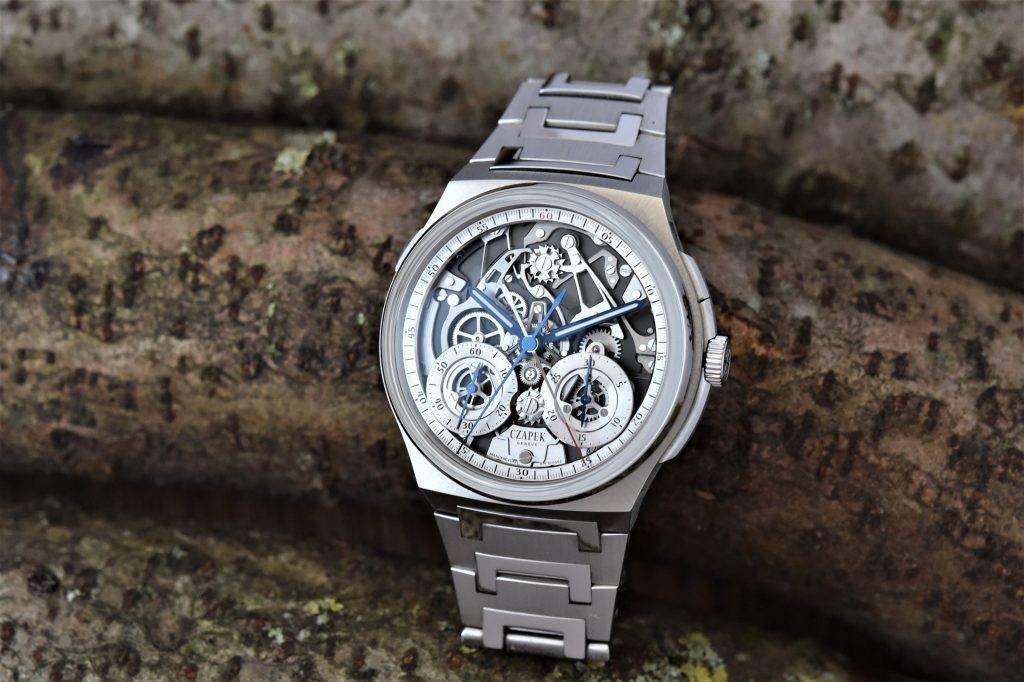
Being the grande complication that they are, they are usually also finely finished, and are traditionally manual-wound movements. The Czapek & Cie. Antarctique Rattrapante, however, combines these traditional elements with a sense of modernity, bringing the split-seconds chronograph mechanism to the dial for all to enjoy – this is also the first time a split seconds chronograph mechanism has been brought to the dial. Not only is this a first for aesthetics in watchmaking, but also an educational experience for the wearer, and the people fortunate enough to handle this watch in person.

During the early stages of the Czapek & Cie. brand, a limited edition watch containing a vintage manual-winding Valjoux 7733 chronograph movement was sold to friends as a fundraising effort to re-register the Czapek name for trading. One of their friends commented on the interaction of the chronograph components when it was being used, and this sparked the idea of bringing the chronograph mechanism to the front of the watch. In effect, it has taken 9 years from concept to fruition, with the help of the famous movement solutions provider, Chronode. Indeed it was serendipitous, as Czapek & Cie. CEO, Xavier de Roquemaurel wanted a dazzling complication for the sport-chic collection – and when Chronode signalled they were ready to produce a working split-seconds chronograph, it was go-time for Czapek & Cie.
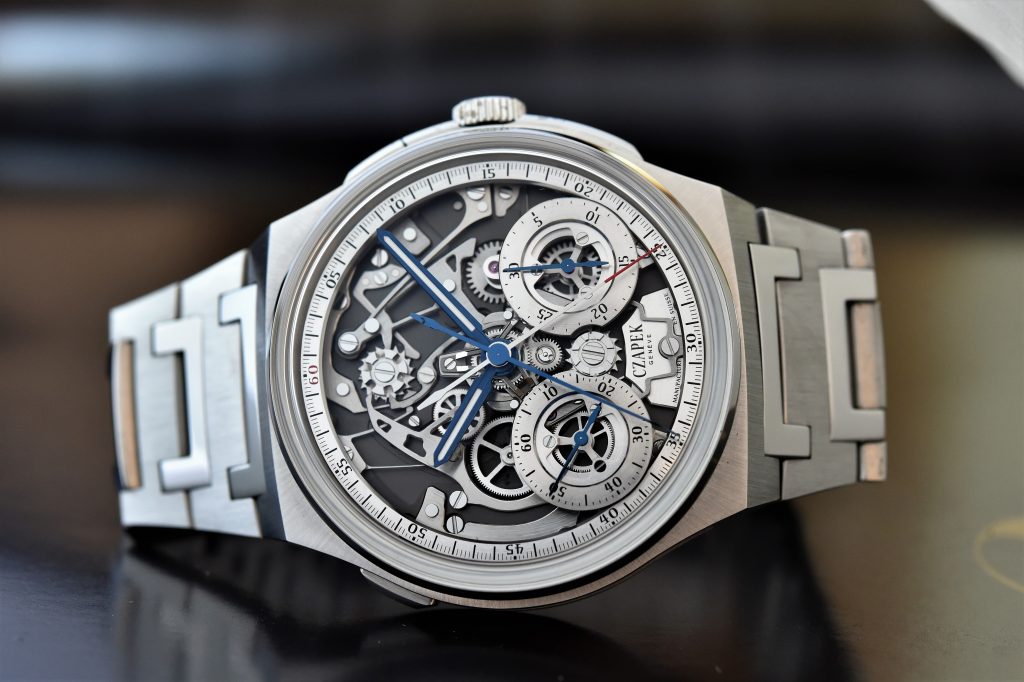
The SHX6 movement was created in collaboration with Jean-Francois Mojon’s Chronode, with the aim of making the rattrapante complication visible on the dial side. For this challenge, they had to reduce the number of components used for this complication, as well as reduce the thickness of the components, so that it would fit the casual elegance of the Antarctique. This entire mechanism forms a split-seconds chronograph module (in itself an impressive feat) that sits on top a high performance base movement that has enough power to provide energy to this complication. Whilst a vertical clutch is widely considered to be the most modern solution for chronographs, a horizontal clutch was deliberately chosen for the SHX6 movement of the Antarctique Rattrapante – explains de Roquemaurel: “This time, we favoured a horizontal clutch rather than a vertical one to highlight the aesthetics of the transmission”. No doubt a wise choice, as a horizontal clutch shows with great clarity how each lever, spring, column wheel and chronograph wheel interact with each other during the use of the chronograph.
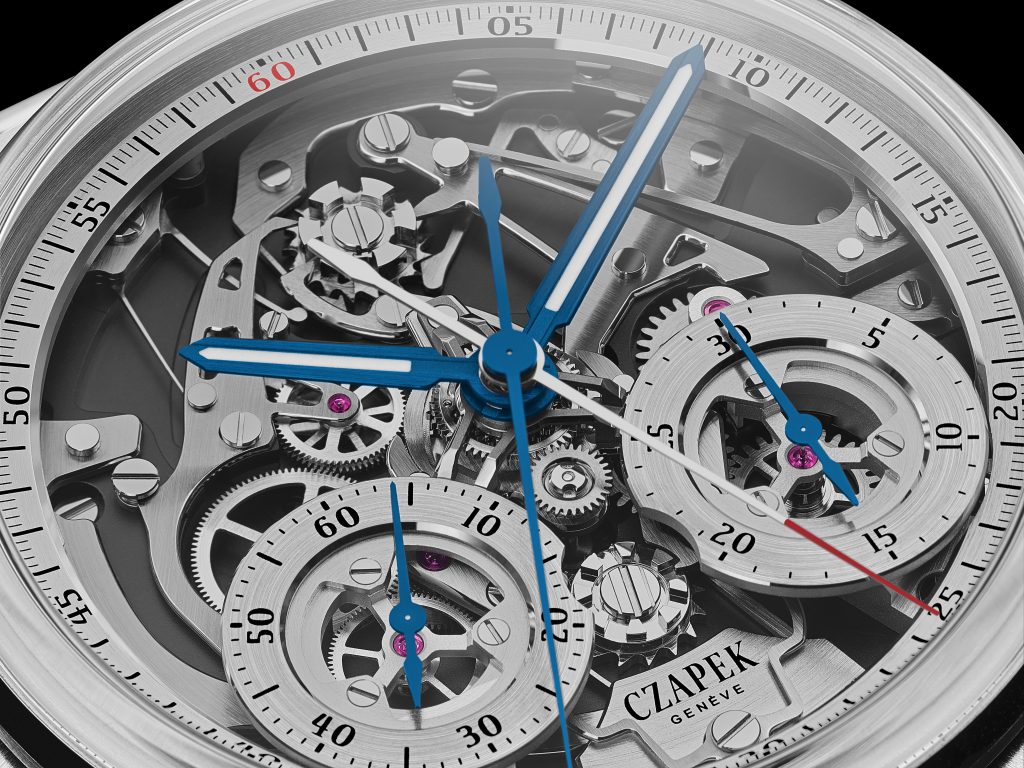
At the centre of the movement lies a distinctive tripod bridge, holding a patented satellite bridge, as well as the split-seconds mechanism below, for which there is a patent pending – it’s unique geometry of the clamp is what enabled a patent for its design. A monopusher chronograph by construction and operation, the split seconds mechanism can be independently stopped and reset at a later time.
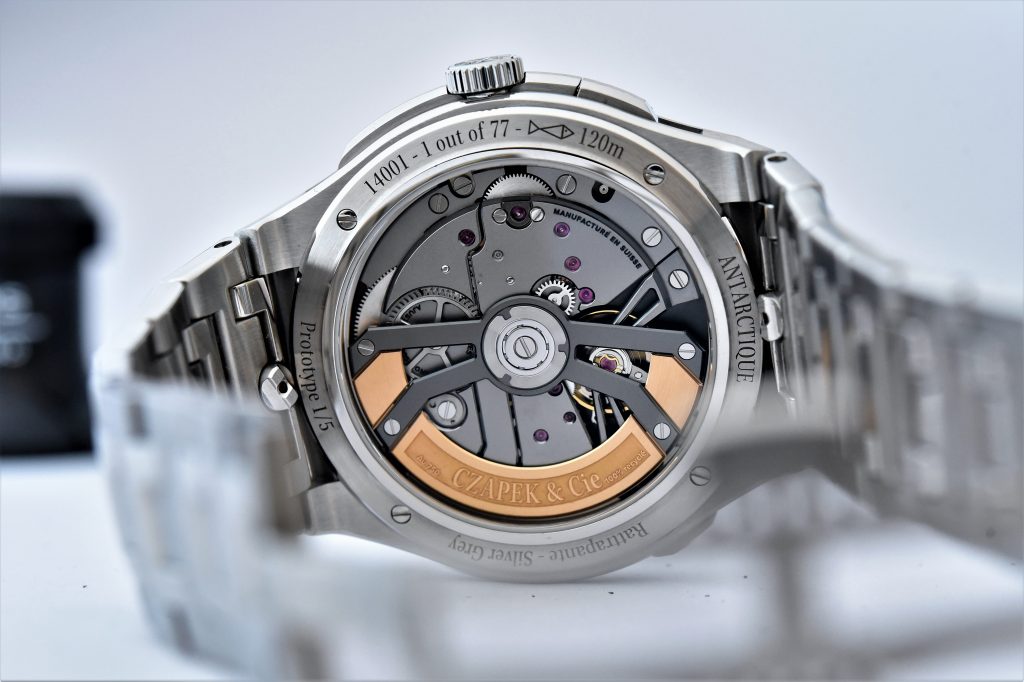
Aesthetically, the movement has symmetry in mind, with column wheels at the top (for the chronograph and bottom (for the split-seconds mechanism) of the movement, and the sub registers at 4 and 7 o’clock serving as visual points for vertical symmetry. Continuing with tradition, the steel levers of the chronograph movement are finished with hand chamfering as well as straight graining – a nod to Haute Horlogerie. As an automatically-wound rattrapante chronograph, the movement contains aesthetic continuity with the other movements utilised in the Antarctique collection. Bridges with distinctive angles were extensively used in these models, and it is the rotor of the Antarctique Rattrapante that continues this aesthetic code. The rotor also utilises recycled 5N Rose Gold, a tribute to its namesake, and highlighting the importance of sustainability in the watch industry today.
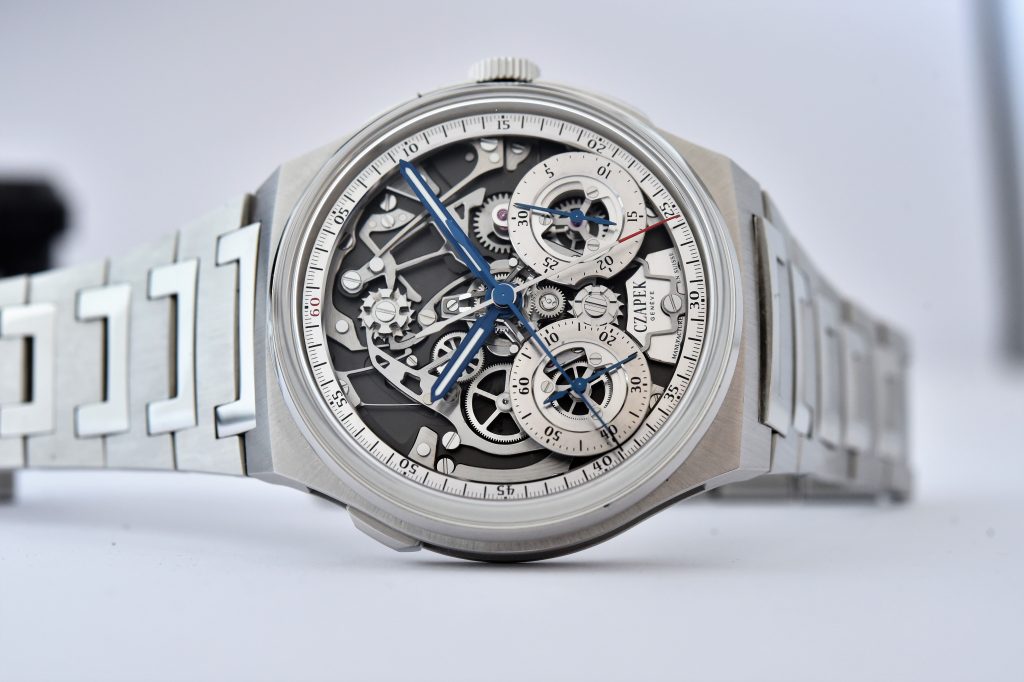
The Antarctique Rattrapante comes in a sporty guise, with its 42mm stainless steel case, and distinctive integrated bracelet. Akin to a knight’s armour, the bracelet is articulated, with alternating brushed and polished links – the polished links in the shape of a stylised ‘C’ for Czapek. The bracelet is interchangeable (albeit with a tool – much easier than a pair of springbar tweezers) for a leather or rubber strap. The sapphire crystal of the watch is a box-shaped crystal, bringing the overall height of the watch to 15.3mm, however, its perceived thickness is lessened on the wrist, with a bezel to caseback height of 10.5mm. The chronograph pusher is situated at 2 o’clock, and the rattrapante pusher is located at 10 o’clock – the integration of the chronograph pusher into the crown guard forms a seamless line, whilst the rattrapante pusher is unobtrusive, and is only there when you go looking for it. The dial features sword hands filled with SuperLuminova, and chronograph hands feature different colours – blue for the main chronograph hand, and silver with a red tip for the split seconds hand. Water resistant to 120m, the watch is a sporty companion with mechanical aesthetics in mind.
The Czapek & Cie. Antarctique Rattrapante has already proven to be a show favourite at Geneva Watch Days 2021, with renewed attention dawning on the brand because of its unique mechanism. The Antarctique collection moves from a time-only sports watch to a true Haute Horlogerie collection with the release of this new reference – limited to 77 pieces, and made to order (taking a leaf out of Abraham-Louis Breguet’s book, and making them to ‘subscription’), the Czapek & Cie. Antarctique Rattrapante will certainly prove to be the stepping stone for this brand’s rise into watchmaking fame.
Technical Specifications
FUNCTIONS
Split-second monopusher chronograph, hours, minutes & seconds
Chronograph minutes at 4:30, Small seconds at 7:30
Chronograph pusher at 2:00, Split-second pusher at 10:00
MOVEMENT
Calibre SXH6: haute horlogerie automatic power-horse movement with a split-second monopusher chronograph module
Power reserve: 60 hours
Frequency: 4 Hz – 28’800 VpH
Variable inertia balance wheel
Two column wheels, chronograph horizontal clutch, patent-pending split-second clamp
49 jewels, 292 components
Recycled 5N rose gold rotor with Czapek logo
Diameter: 34mm
FINISH
Finely shotblasted bridges with hand-polished chamfers
Linear satin-finished chronograph levers with hand-polished chamfers, Circular satin-finished wheels
Black-polished screws, studs and column wheels
CASE
42.5mm stainless steel case, height (with glass-box): 15.3mm, perceived height (bezel to case-back): 10.5mm
Sapphire Crystal glass-box with anti-reflective treatment
Sapphire case back with anti-reflective treatment on inner side
Water Resistance: 120m
BRACELET
Integrated stainless steel bracelet with Czapek exclusive “Easy Release” system
Optional leather or rubber strap
DIAL
Open-worked split-second chronograph on the dial side (world première)
Sword hours and minutes hands with SuperLuminova treatment
Split-second hand with red tip
Diamond-chamfered rhodium-plated minutes ring and counters


